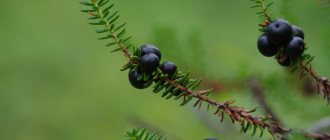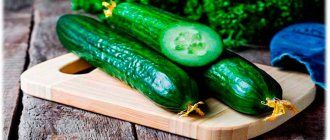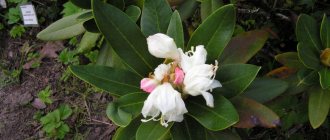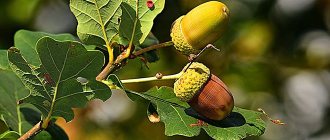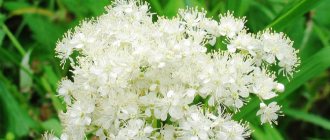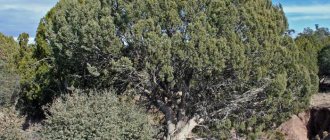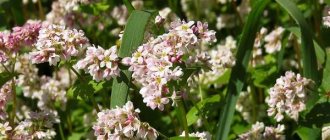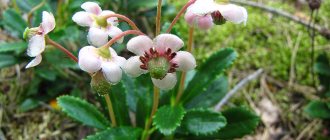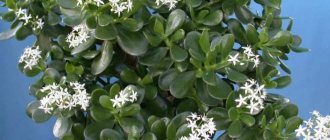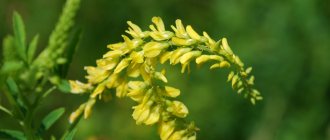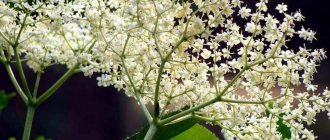Medicinal pumpkin is one of the healthiest and most delicious varieties of melons. Its healing properties help cleanse and rejuvenate the body. Even a novice gardener can grow Medicinal pumpkin; the variety does not require special conditions and, with quality care, brings a rich harvest.
Medicinal pumpkin
Medicinal pumpkin is undemanding in care
Medicinal pumpkin tastes good
Medicinal pumpkin: description and characteristics
Pumpkin got its name due to its high content of vitamins E, B1 and B2. It also contains carotene, fiber, and sugar.
Main characteristics of Medicinal pumpkin:
- The plant's vines are not very long, but thick. The bushes are of small height, the stems are round, not ribbed. The leaves are green in color, large, and have no dissections. The stalk has the shape of a cylinder.
- Pumpkin flowers are yellow with 5 petals. The ovaries are formed only on female inflorescences, the plant’s fruits are large, the weight of one is approximately 5 kg, sometimes reaching 8 kg.
- The fruits are slightly flattened on both sides. The color is light green or light gray, there is a clearly defined pattern in the form of a dark mesh.
- The flesh is bright orange in color and tastes tender and juicy. The aroma is characteristically pumpkin. Each fruit has 3 cavities with white seeds, which are intended for planting.
- Medicinal pumpkin is an early ripening variety. The first fruits can be harvested already on the 100th day after sowing the grains.
- The variety is distinguished by its high yield - about 18 kg of crop can be harvested from 1 plant. About 3-4 pumpkins ripen on 1 bush.
Distinctive features
The main feature of this pumpkin variety is its fruits. They are famous for their rich green rind, covered with a thick coating of white. Because of this feature, the fruits appear slippery. Another distinctive feature is its resistance to sudden changes in air temperature, so pumpkin can be grown in open ground even in the northern regions of the country.
Resistance to pests and diseases
Immunity is average, the plant is not resistant to fungal diseases. Reviews from many summer residents show that the Medicinal pumpkin variety suffers from rot. Also enemies of the variety are powdery mildew and anthracnose.
Pumpkin treatment recipes
Photo: Pixabay
✔ To treat prostatitis, it is recommended to drink 200 ml of pumpkin juice 3 to 4 times a day. Eat three tablespoons of peeled pumpkin seeds daily.
✔ For bladder inflammation, mix one glass of dried pumpkin seeds with one glass of hemp seeds. Grind the seeds, pour in, stirring with three glasses of boiling water, let it brew a little, strain. Take the resulting emulsion throughout the day.
✔ Fresh pumpkin juice from pumpkin pulp helps treat the liver and kidneys. You should drink one glass of juice per day.
✔ Regular consumption of pumpkin is an excellent preventive measure for dental caries. The daily dose of fluoride for a person is 1 mg; a person can receive this dose of fluoride along with 500–600 g of pumpkin.
✔ To treat anemia, patients are recommended to eat from 20 to 150 grams of boiled pumpkin several times a day.
✔ Pumpkin pulp can be applied for medicinal purposes for rashes, burns, eczema and pustules.
Advantages and disadvantages
Medicinal pumpkin, like other varieties, has pros and cons; they must be taken into account when growing this plant.
Benefits of pumpkin:
- frost resistance;
- resistance to sudden temperature changes;
- low maintenance requirements;
- high productivity;
- excellent taste and maximum usefulness of the pulp;
- the bush is medium in size, so more plants can be grown on the site;
- long shelf life.
Disadvantages of pumpkin Medicinal:
- average immunity;
- demands on soil composition.
What diseases does pumpkin treat?
The composition of pumpkin substances treats diseases of internal organs and the central nervous system, as well as blood vessels. Pumpkin is useful to use for poor vision and to regulate metabolism.
Also:
- restores elasticity to blood vessels and helps with hypotension;
- cleanses the body, facilitating the work of the kidneys, eliminates swelling;
- participates in the renewal and restoration of cells and tissues;
- gives energy, calms nerves and improves sleep;
- plays the role of a barrier to colds, strengthening the immune system;
- helps to lose weight;
- relieves nausea;
- Helps eliminate stomach inflammation and ensure proper functioning of the gallbladder.
Boiled and stewed, pumpkin is useful for tuberculosis, jaundice, gout and cholecystitis. Acts as a mild laxative, relieves renal and hepatic edema.
Features of growing medicinal pumpkin
The main features of growing this variety:
- Despite its frost resistance, pumpkin loves sun and warmth, so plant it in sunny areas. In autumn, dig up the soil and clear it of various debris, including the roots of weeds and plants.
- For 1 sq. m, add 5-7 kg of rotted manure. In case of high acidity of the soil, add dry lime or ash. Heavy soil needs sand.
- In the spring, level the soil with a rake and clear it of grass. For 1 sq. m add 30 g of superphosphate and 25 g of urea, water the beds with a hot solution of copper sulfate (0.5 tbsp per 5 liters of water).
- The minimum soil temperature for growing pumpkins is +12 degrees. With this indicator, Medicinal pumpkin can be planted, but it is better that the air temperature reaches +24 degrees, then the soil will warm up enough.
- When cold weather sets in, the pumpkin stops growing and resumes growth on the first sunny and warm day.
- To speed up the growth of plants, you should make a small greenhouse.
- You can use the seedling method of cultivation, then the sowing time is shifted by 3 weeks (approximately the beginning of April).
Germination of seeds
You cannot plant a seed in the ground right away; you first need to process and harden it. Germination of seed takes about 2-3 days; after all procedures are carried out, the plant will sprout much faster.
Algorithm for preparing seeds for planting:
- Soak the seed in warm water for 2 hours.
- Place the seeds in damp gauze and place it in a warm place.
- Store the grains in this condition until they begin to hatch.
- Make sure that the gauze does not dry out.
Sowing seeds in open ground
Be sure to plant the seeds in the soil at a temperature not lower than +12...+15 degrees, otherwise the seeds will not begin to germinate.
Seed sowing algorithm:
- Dig holes 0.3 m deep. Place 10 cm of humus or rotted manure at the bottom. Fill the rest of the space with soil.
- Planting pattern: 60*80 cm.
- Sow 3 seeds per hole, but away from each other. Deepen the first seed by 5 cm, the second by 7 cm and the third by 9 cm.
- Water the holes.
- Cover the beds with film and remove it a week after the seeds germinate.
- Pinch off weak shoots and leave one plant in each hole.
Growing seedlings
It is necessary to sow pumpkin seeds for seedlings on April 20-30, or earlier. It all depends on the climatic conditions of your region. The seedlings are transferred to open soil after 2 weeks.
The melon crop does not tolerate picking, so it must be sown immediately in separate pots. You can use various containers, for example, juice bottles, plastic bottles, cups or peat tablets.
Algorithm for growing seedlings:
- Medicinal pumpkin is very demanding on the composition of the soil; it loves fertile but loose soil. You can use a store-bought mixture for melons.
- If you have the opportunity, prepare the soil yourself: 1 part garden soil + 1 part humus + 0.5 parts sand. For 1 bucket of this mixture, add a glass of ash and a little superphosphate (1 tbsp.).
- The pots must have drainage; coarse sand serves as this; the rest is filled with prepared soil. Treat seedling pots, soil and drainage with a saturated solution of potassium permanganate. Deepen the grains by 3-5 cm.
- To make the seeds germinate better and faster, spray them with warm water 2-3 times a week.
- Avoid excessive ventilation of seedlings.
- As soon as the seeds in the pot germinate, pinch out the weak ones and leave one strong plant.
- For speedy germination, the air temperature should not fall below +27 degrees. A week after the sprouts appear, it is lowered to +18 degrees.
Seedlings are fed only once. Use Nitrophoska or chicken manure diluted with water in a ratio of 1:10.
Transplanting seedlings into open ground
At the time of transplanting the plant, 3 true leaves should appear on the sprouts. Small internodes indicate the quality of the plant. 7 days before transplanting the sprouts into open ground, the seedlings are hardened off; to do this, they are taken out into the fresh air every day.
To transplant seedlings:
- Dig holes in a checkerboard pattern (60*80 cm). Place 1 liter of bird droppings solution in each cavity.
- Plant 1 plant per hole.
- Do not bury the root collar.
- Water with warm water using the rainfall method.
- Cover the sprouts with film for a week after transplanting.
Is it possible to pumpkin during pregnancy?
If you are not allergic, you can consume this healthy vegetable while pregnant. The beneficial properties of pumpkin during pregnancy are that it eliminates swelling, prevents constipation and supplies nutrients to the body. Calcium and phosphorus in the vegetable are very beneficial for both the fetus and the woman herself.
In addition, the benefits of fried pumpkin will be useful for toxicosis. Of course, the benefits and harms of pumpkin for pregnant women depend on the volume of the product - excessive consumption of the vegetable can lead to diarrhea.
How to care for a pumpkin?
Medicinal pumpkin is an undemanding plant to care for. To get a large harvest, you should adhere to standard, but important rules for growing this melon crop.
Watering and fertilizing
The main thing to care for pumpkin is regular and proper watering. The pumpkin, like a pump, pumps out all the moisture from the soil and waits for the next “portion”. Water evaporates through the leaves, so the roots and stems do not receive it in sufficient quantities.
Expose the water to the sun in advance; its temperature should not be lower than +20 degrees. Watering with cold water is death for a pumpkin. After adding moisture, it is necessary to loosen the soil and, as weeds appear, pull them out.
If the summer season is too dry, then the plant is watered more often before flowering.
A melon crop cannot do without fertilizers, otherwise you will not get large fruits. The first feeding of the pumpkin is after the appearance of the 5th leaf, the second is after the formation of the wattle, then add useful microelements to the soil every 2 weeks.
Nitrophoska is used as fertilizer (10 g per 1 plant), with each subsequent feeding the amount of nitrophoska increases by 5 g. You can use dry granules or dilute the product. During the fruiting period, add an additional 1 cup of ash. Use mullein solution throughout the growing season.
Weeding and loosening
Until side shoots appear, you should regularly loosen the soil and remove all weeds. As soon as the plants begin to spread along the ground, they should not be disturbed, otherwise the stems will break very quickly. Carry out weeding simultaneously with watering. Loosening helps oxygen flow freely to the root system.
Harvesting
The harvest is harvested at the end of August or beginning of September, everything directly depends on the climatic conditions in the region. Cleaning is done manually. It is necessary to prepare a knife or pruning shears; cut the fruit closer to the petiole, leaving a tail of about 10 cm.
Diseases and pests
Medicinal pumpkin has weak immunity to fungal diseases; to reduce the risk of their occurrence, it is necessary to spray the plants with a weak solution of potassium permanganate once a week.
The most dangerous diseases are: root rot, white rot and powdery mildew. If the pumpkin is infected, then use Bordeaux mixture or special chemicals as a control. If the plant is neglected, immediately dig it up and burn it, and treat the neighboring plantings.
What are the benefits of pumpkin?
The pulp improves digestion, saturates the body with vitamins and mineral components, and normalizes stool.
General benefit
Pumpkin fruits are good for health:
- improve visual acuity;
- stabilize the peristalsis of smooth muscles of the gastrointestinal tract;
- participate in intracellular metabolism - increase the speed of metabolic processes;
- promote the removal of excess fluid and toxins;
- improve kidney function;
- increase the elasticity of vascular walls, reduce blood pressure;
- have a calming effect on the nervous system;
- increase the activity of immunocompetent cells, reduce the likelihood of contracting colds;
- improve tissue regeneration, stimulate cellular renewal.
For men
Zinc, organic acids and antioxidants in pumpkin prevent inflammation of the prostate gland in men after 40 years of age, slow down cell aging and reduce the risk of erectile dysfunction. With regular consumption of the product, the risk of developing cardiovascular pathologies is reduced.
For children
Vitamins and microelements contained in pumpkin pulp are beneficial for children. The vegetable can be consumed in puree form from 6 months. Thanks to the use of pumpkin, the formation of the nervous and immune systems is normalized, the quality of sleep improves, and the mental and physical activity of the child increases.
For the elderly
Despite the content of coarse plant fiber, pumpkin is easily digested and absorbed in the body. It does not create additional stress on the digestive tract of older people and prevents the development of constipation.
Minerals strengthen the bone tissue of the musculoskeletal system and prevent the thinning of cartilage. Antioxidants have a positive effect on the condition of the heart and blood vessels.
For women
Pumpkin pulp and seeds have a beneficial effect on a woman’s body:
- normalize the psycho-emotional state, improve mood;
- stabilize weight;
- improve the condition of nails, strengthen curls, restore the elasticity of the epidermis, and return it to a healthy color;
- increase tone;
- prevent weakness, anemia during heavy menstruation;
- restore hormonal balance.
When losing weight
Due to its fiber content, pumpkin cleanses the gastrointestinal tract during weight loss. As a result, food is digested faster and nutrients are more easily absorbed into the blood.
There is an acceleration of overall metabolism. With a balanced diet and physical activity, the process of weight self-regulation starts.
For the purpose of fat burning, pumpkin juice and raw pulp are included in the diet. The latter can be added to vegetable salads. It is also recommended to consume seeds: they are rich in antioxidants, which increase the tone of the body.
During pregnancy
Eating pumpkin during pregnancy helps:
- relieve swelling of soft tissues;
- eliminate constipation in the third trimester;
- strengthen the musculoskeletal system;
- reduce the risk of developing intrauterine fetal anomalies;
- relieve symptoms of toxicosis (to do this, the pumpkin should be fried in a dry frying pan).
When breastfeeding
Pumpkin can be consumed 10 days after birth. The product is hypoallergenic, easily digestible, and therefore will not harm the newborn’s body. Allows a nursing woman to quickly lose excess weight, stabilize hormonal levels, and speed up the process of tissue regeneration.
Possible difficulties during cultivation
Growing a pumpkin is not very easy, and some inexperienced gardeners make a number of mistakes that are difficult to correct later.
The main problems that arise when growing Medicinal pumpkin:
- Seeds and weak seedlings did not germinate . The reason is watering with cold water or placing pots with seedlings (seeds) in a draft.
- Delayed growth and development. The reason is too poor, infertile soil. The solution is to apply fertilizer to the soil.
- A small number of ovaries are formed. The reason is poor pollination or its complete absence. The solution is to spray the bushes with sweet water or to independently pollinate the female inflorescences with male flowers.
- Fruit ripening takes too long. The reason is that the fruits are located in the shade of their own leaves. The solution is to remove the greens from the pumpkins.
- The plant produces a lot of greenery and few fruits. The reason is a large number of feedings. The solution is to stop applying fertilizer.
Which pumpkin is healthier?
Pumpkin retains its vitamin and mineral complex during heat treatment, so it is useful in any form.
Raw
In its raw form, the fruit has low energy value. In the absence of nitrates and pesticides in the composition, it benefits people suffering from gastritis, high acidity of gastric juice, obesity, and disruption of the endocrine system.
The raw pulp is added to vegetable salads or used as a garnish. It is forbidden to take the product during exacerbation of pancreatitis or hypoacid gastritis.
Dried
During the drying process, excess liquid evaporates, increasing the concentration of nutrients. Dried pumpkin has a positive effect on the digestion process, has choleretic and diuretic effects, and improves memory. At the same time, its abuse causes diarrhea as a result of increased gastrointestinal motility.
Boiled
During the gentle heat treatment, 80% of vitamins are preserved. In this form, pumpkin prevents the development of anemia and relieves irritation of the gastric mucosa. The boiled pulp is used for feeding infants, preparing masks, and folk remedies.
Baked
Baked pulp benefits the cardiovascular system and cleanses the blood of toxins. Improves liver function and has a mild diuretic effect. It is forbidden to eat baked pumpkin if you have diabetes, since the cooking process increases its glycemic index, calorie content and sugar content.
Benefits of the peel
The peel contains a large amount of zinc and plant proteins, which have antibacterial and antifungal effects. The product is used to prepare decoctions that are effective in the fight against thrush, vaginitis, candidiasis, and cystitis.
Pumpkin peel infusions reduce the risk of parasitic infestation. The carotene contained in it removes carcinogens from the body.
Advice from experienced gardeners
The main recommendations for growing Medicinal pumpkin from experienced summer residents:
- Add humus or straw as mulch. A layer of these materials protects the root system of plants from bad weather conditions and prevents weeds from growing. Another advantage of mulch is the appearance of earthworms in the nutrient substrate; they naturally loosen the soil.
- Before the formation of inflorescences, water the plants using the rain method, then apply moisture only at the root. As soon as the fruits appear, stop watering.
- Wood substrates help prevent fruit rotting.
- The main stem is sprinkled with soil in one place. This helps new roots emerge and establish themselves in the ground faster.
Video review of Medicinal pumpkin, see the following video:
Pumpkin in cooking
Pumpkin dishes are the key to good health and well-being. This product is perfectly absorbed by the human body. Most pumpkin dishes are prepared very quickly.
This vegetable is used in cooking in many countries around the world. In America, pumpkin is the main ingredient in the traditional Thanksgiving pie. In South Asia, desserts are mainly prepared from this product. In Japan, small pumpkins are used to make tempura. In Thailand, this small-sized vegetable is steamed, first stuffed with mustard. Italians often use pumpkin and cheese as a filling for ravioli.
The simplest recipe is pumpkin puree. To do this, cut it into cubes or grate it, simmer until soft under the lid, then mash it with a potato masher or spoon. To taste, the puree can be spicy, salty or sweet. You can add spices, herbs and herbs to it to diversify the taste of the dish.
Pumpkin mass can be prepared for future use and stored in the refrigerator for some time. It goes well with potatoes, tomatoes, carrots, zucchini and other vegetables, as well as meat or minced meat. You can make pies, pancakes or pies from pumpkin.
Farmer reviews
★★★★★
Olga, 62 years old, librarian, Valuiki. I have been growing medicinal pumpkin in my dacha for over 8 years.
An excellent variety - unpretentious in care and famous for its high yield. I noticed one drawback - it needs a lot of fertilizer. But in order not to have to worry about fertilizing, I plant the plants directly in the compost pit. Pumpkins grow tasty and juicy and are stored for a very long time. The harvest from two plants is enough for the whole family. ★★★★★
Oleg, 39 years old, manager, Moscow. Medicinal pumpkin is the most favorite variety.
I love its fruits, they are the same as shown in many photos. The pulp is juicy, there are relatively few seeds, but they are very tasty. Hide
Add your review
Medicinal pumpkin is not afraid of sharp frosts and many viral diseases. All a summer resident needs to do is apply fertilizers on time and follow preventive measures against fungal diseases.
0
0
Copy link
Benefits of pumpkin oil
An oil unique in its healing properties is produced by cold pressing from pumpkin seeds. It contains vitamins and microelements, as well as essential phospholipids and flavonoids of plant origin.
The introduction of such oil into the diet helps prevent atherosclerosis, neurosis, normalize hormonal levels in women and men, and remove cholesterol. A similar product is also used in cosmetology for skin and hair.
Before using pumpkin oil, it is recommended to consult a doctor, since it has a choleretic effect, and if used incorrectly (especially in large quantities) can be harmful to health.
Nutritional value and nutrients
The beneficial properties of pumpkin and its contraindications are determined by the chemical composition of this vegetable. About 75% of the mass of the vegetable is pulp, 10% is seeds and approximately 15% is peel.
The peel is usually not used for food because of its hardness, but the pulp and seeds are not only eaten, but also used as medicine.
The stalks and flowers are also sometimes used for medicinal purposes.
Nutritional value: 100 g of pumpkin contains: 1 g of protein, 1 g of fat, 4.4 g of carbohydrates, 91.8 g of water, calorie content 22 kcal.
This vegetable contains a large number of different substances that have a beneficial effect on the human body:
- Ascorbic acid (vitamin C) – boosts immunity and protects against seasonal colds.
- Rarely found in other vegetables, vitamin T is found in pumpkin. It helps digest heavy foods more easily, so it is primarily useful for people who are overweight. In addition, vitamin T prevents anemia, promotes platelet formation, and improves blood clotting.
- Pumpkin is rich in pectins, and there is more carotene in yellow and orange varieties than in carrots.
- Necessary for the synthesis of blood protein and bone tissue, vitamin K, which is absent in almost all other vegetables but is present in pumpkin, gives it even greater value.
In addition, it contains:
- vitamins A, D, E, F, PP,
- B vitamins,
- macro- and microelements: iron,
- potassium,
- calcium,
- magnesium,
- copper,
- phosphorus,
- cobalt;
- fiber;
- accelerating metabolism,
